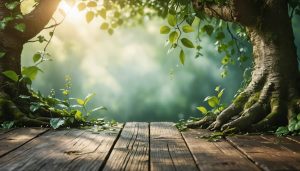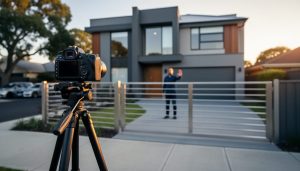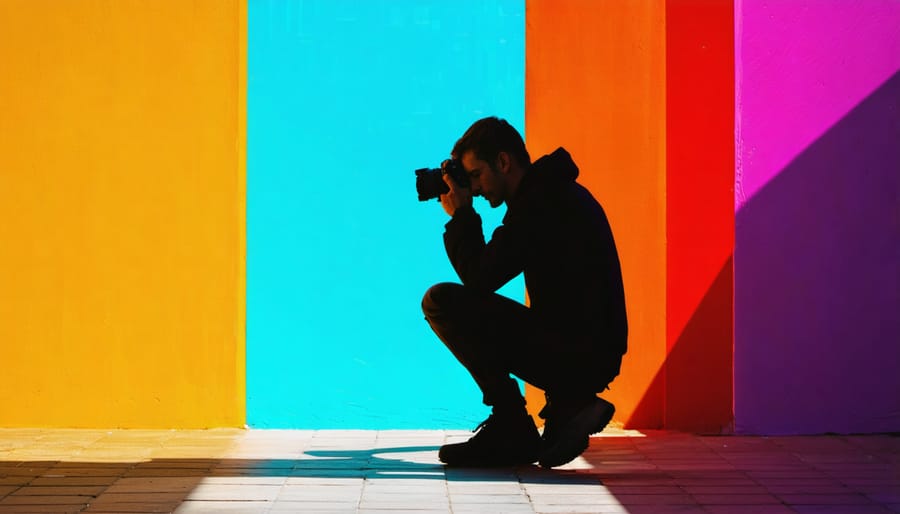
Mastering photographic composition transforms ordinary snapshots into images that create powerful visual stories. The deliberate arrangement of visual elements within your frame—lines, shapes, colors, and space—forms the foundation of compelling photography. Every exceptional photograph starts with understanding these fundamental building blocks: the rule of thirds guides viewer attention, leading lines direct the eye through the frame, and balanced negative space creates visual breathing room. Whether shooting landscapes, portraits, or street photography, these timeless principles transcend gear and technical settings, enabling photographers to craft images with intention and impact. By mastering composition, you develop an intuitive sense of visual balance that elevates your work from simple documentation to artistic expression.
The Rule of Thirds: Beyond the Basic Grid

Dynamic Grid Placement
While the rule of thirds grid provides a solid foundation for composition, its true power lies in how you can use it dynamically to create tension and movement in your images. Instead of always placing your subject directly on the intersection points, consider using the grid as a starting point for more creative placements.
For instance, positioning your subject slightly off the traditional grid points can create a sense of unease or dramatic tension. This technique works particularly well in street photography or portraiture where you want to convey emotion or storytelling through composition.
Movement can be enhanced by using the grid lines as directional guides. When photographing a running athlete, try aligning their movement along a horizontal grid line, but position them slightly ahead of or behind the vertical intersections. This creates a sense of motion and suggests where the subject is heading within the frame.
The spaces between grid lines are equally important. By placing elements in these areas, you can create depth and visual flow. Consider a landscape photo where mountains occupy the space between two horizontal grid lines while clouds drift across the upper third – this creates a natural progression for the viewer’s eye.
Remember that breaking the grid rules intentionally can be just as effective as following them. The key is understanding how different placements affect the viewer’s emotional response to your image.
Breaking the Rules Effectively
While the rule of thirds has long been a cornerstone of photographic composition, knowing when to break it can lead to even more powerful images. Understanding these fundamental vision principles allows you to make informed decisions about when to follow or ignore traditional rules.
Central composition, often discouraged by the rule of thirds, can create striking symmetry and emphasize your subject’s importance. Think of a lone tree in a misty field or a portrait where you want the viewer’s attention focused directly on the subject’s eyes. These centered compositions can convey power, stability, or isolation more effectively than off-center placement.
Strong geometric patterns or leading lines might work better when composed symmetrically rather than following the thirds grid. Architecture photography, in particular, often benefits from breaking this rule, as balanced compositions can emphasize the building’s structural design and grandeur.
Deliberate empty space, placing your subject at the edge of the frame, or creating intentionally unbalanced compositions can generate tension and visual interest. The key is understanding that rules in photography are more like guidelines – they’re there to help you get started, but shouldn’t limit your creative vision.
Remember, breaking composition rules should be intentional, not random. When you choose to ignore traditional guidelines, do so with purpose and conviction, ensuring your creative decision serves the story you’re trying to tell through your image.
Leading Lines and Visual Flow
Natural vs. Artificial Lines
In photography, you’ll encounter both natural and artificial leading lines, each offering unique opportunities for compelling compositions. Natural lines occur organically in our environment – think winding rivers, tree branches, mountain ridges, or shorelines. These organic lines tend to create more subtle, flowing compositions that guide viewers through your image in a gentle, natural way.
Artificial lines, on the other hand, are human-made elements like roads, railroad tracks, bridges, or architectural features. These tend to be more geometric and decisive, often creating strong directional pulls within your frame. Urban environments are particularly rich in artificial lines, offering photographers endless possibilities for dramatic compositions.
Both types of lines can be equally effective in your photography, but they often evoke different emotional responses. Natural lines typically convey a sense of harmony and tranquility, while artificial lines can suggest progress, structure, or modernity. The key is recognizing these different line types in your environment and understanding how to use them intentionally.
When photographing, try combining both natural and artificial lines to create dynamic tension in your images. For instance, capturing a modern building against the organic curves of hills, or photographing where a straight road meets a meandering coastline can create particularly striking compositions.
Creating Movement Through Lines
Lines are powerful tools in photography that can guide viewers’ eyes through your image and create a sense of movement, even in static subjects. When used intentionally, lines can transform a simple photograph into a dynamic composition that keeps viewers engaged.
Leading lines are perhaps the most effective way to create movement in your photos. These can be literal paths, roads, or railings that draw the eye from the foreground to your main subject. For instance, a winding mountain trail can naturally lead viewers to a distant peak, while diagonal lines often create a sense of energy and action.
Curved lines add a graceful flow to your compositions and feel more organic than straight lines. Think of a meandering river, the sweep of a sand dune, or the gentle arc of a dancer’s pose. These S-curves are particularly effective in landscape and portrait photography, adding a subtle sophistication to your images.
To maximize the impact of lines in your compositions, consider their direction and placement. Horizontal lines suggest stability and calm, while vertical lines convey strength and growth. Diagonal lines create tension and dynamism, perfect for sports or street photography. Remember that intersecting lines can create powerful focal points, drawing attention exactly where you want it.
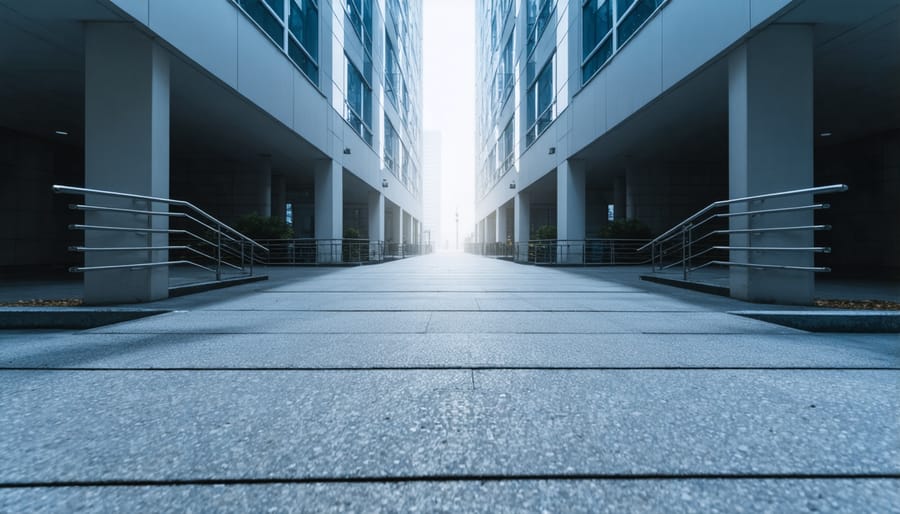
Balance and Visual Weight
Symmetrical vs. Asymmetrical Balance
Balance in photography comes in two main forms: symmetrical and asymmetrical, each creating distinct visual impacts in your images. Symmetrical balance occurs when elements on both sides of the frame mirror each other, creating a sense of perfect harmony and formal order. Think of a reflection in still water or a building photographed head-on with identical features on each side. This type of balance often conveys feelings of stability, formality, and classical beauty.
Asymmetrical balance, on the other hand, involves arranging different elements in a way that creates equilibrium without perfect mirroring. For example, a large rock on one side of the frame might be balanced by a cluster of smaller rocks or flowers on the other side. This approach often results in more dynamic and engaging compositions, as it creates visual tension while maintaining overall stability.
While symmetrical compositions can be striking and powerful, they can sometimes feel static or predictable. Asymmetrical balance offers more creative freedom and often feels more natural, mirroring the organic arrangements we see in nature. Consider a street photography scene where a single person on one side is balanced by a group of pigeons on the other – the visual weight is distributed unequally but still feels harmonious.
The key is understanding when to use each type. Architectural photography often benefits from symmetrical balance, while nature and street photography frequently leverage asymmetrical arrangements for more compelling storytelling.
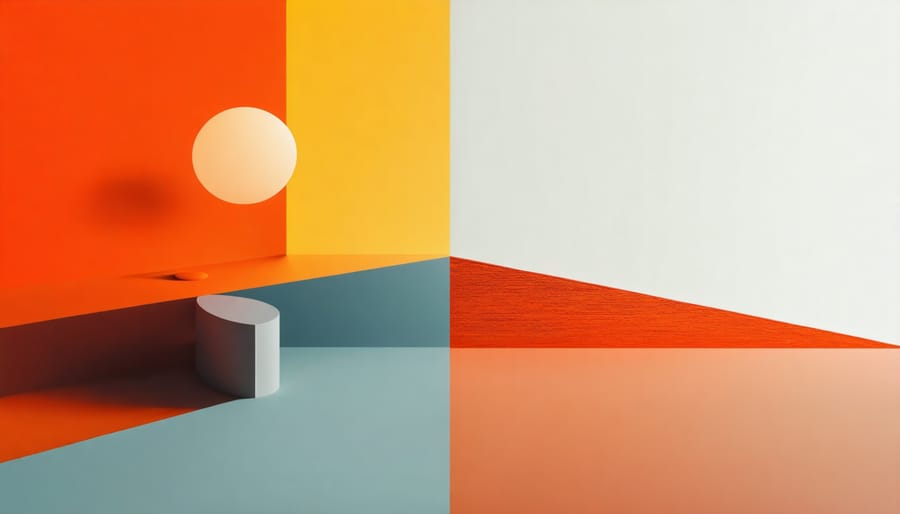
Color and Contrast Weight
Color and contrast play pivotal roles in creating visual weight within your photographs. When composing an image, understanding color theory in photography becomes essential, as different colors naturally draw varying levels of attention from viewers.
Warm colors like red, orange, and yellow tend to advance in an image and carry more visual weight than cool colors such as blue and green. This natural hierarchy can be used to direct attention to your subject or create deliberate tension within the frame. For instance, a small red flower against a vast green landscape immediately catches the eye despite its size.
Contrast also significantly influences visual balance. High-contrast areas naturally command attention, while low-contrast regions recede into the background. This principle works particularly well in minimalist composition techniques, where stark contrast can create powerful statements with minimal elements.
Consider how complementary colors create natural contrast – blue against orange, or purple against yellow. These combinations can energize your composition or create harmonious balance depending on their placement and proportion. When working with color and contrast, remember that less can often be more. Sometimes, a single bold color against a neutral background creates more impact than a complex array of competing hues.
Framing and Negative Space
Natural Framing Elements
Natural framing is one of photography’s most powerful compositional tools, using elements in the environment to create a frame within your frame. Think of shooting through an archway, capturing a landscape through tree branches, or photographing a subject through a doorway – these elements draw attention to your main subject while adding depth and context to your image.
When looking for natural frames, start by observing your surroundings. Windows, tunnels, rock formations, and even crowds of people can serve as effective framing devices. The key is to ensure your frame complements rather than competes with your subject. Position yourself so the framing element leads the viewer’s eye naturally to the main point of interest.
The beauty of natural framing lies in its versatility. In landscape photography, overhanging branches can frame a mountain vista. For street photography, architectural elements like bridges or building columns can create compelling frames. Even in portrait photography, you might use foliage or environmental elements to frame your subject.
Remember that frames don’t need to be complete – partial frames can be just as effective. A single tree branch or the curve of a cave opening can direct attention while maintaining a sense of openness in your composition. The most successful natural frames often appear so organic that viewers might not even consciously notice them.
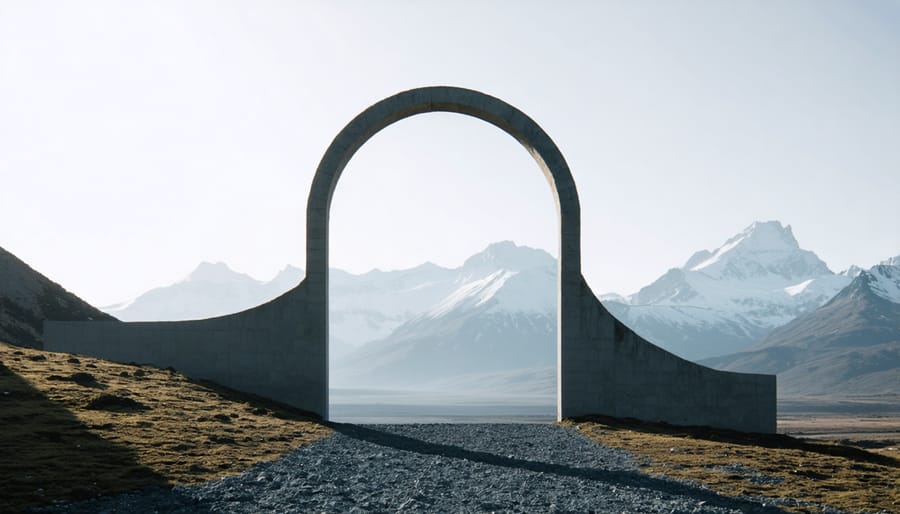
The Power of Empty Space
Sometimes, what you leave out of your photograph can be just as powerful as what you include. Negative space, or empty space, is the unoccupied area around your main subject that creates breathing room and draws attention to your focal point. Think of it as the visual silence that makes your subject’s voice stronger.
Consider a lone tree against a vast, empty sky. The emptiness around the tree doesn’t detract from the image – instead, it emphasizes the tree’s solitude and creates a sense of scale and drama. This technique works particularly well in minimalist photography, where simplicity is key to creating impact.
To effectively use negative space, look for clean backgrounds like clear skies, empty walls, or smooth water surfaces. Position your subject to interact with this space meaningfully. For instance, if you’re photographing a person looking to the side, leave more empty space in the direction they’re facing to create a sense of movement and intention.
Remember that negative space doesn’t have to be completely empty or white – it can be any relatively uniform area that contrasts with your main subject while avoiding distracting elements. The key is maintaining simplicity and intentionality in your composition.
Pattern and Repetition
Finding Natural Patterns
Nature is a masterful artist, presenting photographers with endless opportunities to capture stunning patterns. From the symmetrical arrangement of petals in a flower to the rippling waves in sand dunes, natural patterns can transform ordinary scenes into compelling photographs. Look for repeating elements in leaves, tree bark, water ripples, and rock formations – these create visual rhythm and lead viewers through your image.
In architecture, patterns emerge through repetitive design elements like windows, columns, or tiles. Modern buildings often feature geometric patterns that create strong visual impact, while historic architecture might showcase intricate, organic patterns in their decorative elements. The key is to train your eye to spot these recurring elements and consider how they can best be framed.
When photographing patterns, experiment with different angles and perspectives. Sometimes shooting straight-on highlights the pattern’s uniformity, while shooting at an angle can add depth and dimension. Consider how light interacts with the pattern – early morning or late afternoon light can create shadows that enhance the pattern’s texture and depth. Remember that breaking patterns can be just as interesting as perfect symmetry, adding an element of surprise to your composition.
Breaking Patterns
While patterns can create striking compositions, deliberately breaking these patterns can lead to even more compelling images. This technique, known as pattern interruption, creates a focal point that immediately draws the viewer’s eye. Think of a row of yellow pencils with one red pencil, or a flock of white birds with a single black one among them – these interruptions create visual tension and interest.
To effectively break patterns in your photography, look for naturally occurring disruptions or create them intentionally. This might mean waiting for someone to walk through your frame of repeated architecture, or positioning a contrasting object within a uniform background. The key is to ensure the break is purposeful and enhances rather than detracts from your composition.
Color, size, shape, or orientation can all serve as pattern breakers. For instance, photographing a wall of identical windows becomes more dynamic when one window is open or painted differently. Remember that the interruption should be significant enough to be noticed but not so dramatic that it overwhelms the original pattern.
Perspective and Depth
Photography is inherently a challenge of capturing our three-dimensional world in a two-dimensional medium. Understanding perspective and depth allows photographers to create images that maintain that sense of dimension and spatial relationship that our eyes naturally perceive.
One of the most effective ways to create depth is through the use of leading lines. These can be natural elements like roads, fences, or rivers, or architectural features like hallways and staircases, that guide the viewer’s eye from the foreground to the background. When composing your shot, look for these natural pathways and position them to start near the bottom corners of your frame.
Layering is another powerful technique that adds depth to your images. By including distinct foreground, middle ground, and background elements, you create a sense of distance and space. For instance, when photographing a landscape, you might include rocks or flowers in the foreground, trees or buildings in the middle ground, and mountains or clouds in the background.
The manipulation of focus also plays a crucial role in creating depth. Using a shallow depth of field (wide aperture) can separate your subject from the background, creating a sense of three-dimensionality. This technique is particularly effective in portrait photography, where a blurred background can make your subject appear to pop out of the frame.
Atmospheric perspective, where distant objects appear lighter and less contrasty due to atmospheric haze, can be used to enhance depth in landscape photography. Early morning or late afternoon shots often naturally showcase this effect, as humidity and light conditions create layers of atmosphere between elements at different distances.
Remember that overlapping elements in your composition can also reinforce depth. When objects in your frame overlap, it creates a clear spatial relationship that helps viewers understand the relative position of different elements in your scene. This simple yet effective technique works across all photography genres, from street photography to still life.
Mastering the elements of composition is a journey that transforms good photographs into exceptional ones. Throughout this guide, we’ve explored the fundamental principles that serve as the building blocks of compelling imagery. From the rule of thirds to leading lines, negative space to symmetry, each element plays a crucial role in creating visually striking photographs that tell powerful stories.
Remember that while these rules provide an excellent foundation, they’re meant to be guidelines rather than rigid constraints. As you develop your style and explore various artistic photography techniques, don’t be afraid to bend or break these rules intentionally. The key is understanding why these principles work so you can make informed decisions about when to follow them and when to diverge for creative effect.
Practice is essential. Start by focusing on one composition element at a time in your photography sessions. Analyze the works of photographers you admire, identifying how they implement these principles in their images. Keep experimenting with different combinations of elements, and don’t be discouraged if your first attempts don’t match your vision – every great photographer started somewhere.
Most importantly, remember that compelling composition isn’t about following a checklist; it’s about creating images that resonate with viewers and effectively communicate your intended message. With time, patience, and consistent practice, these composition elements will become second nature, allowing you to focus more on capturing the perfect moment.



